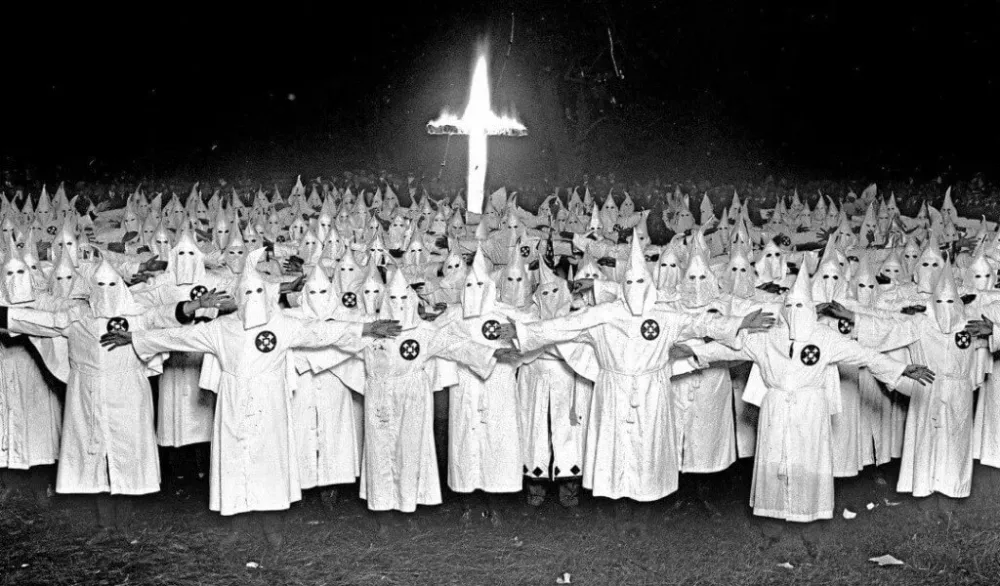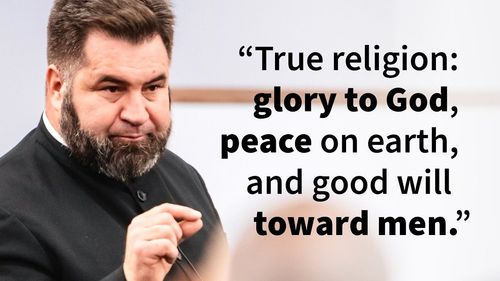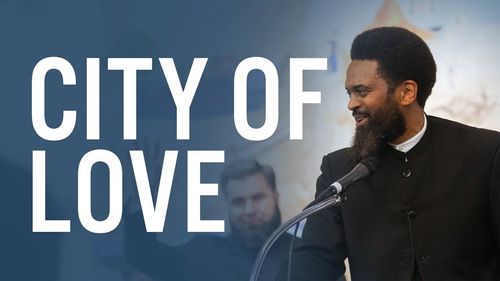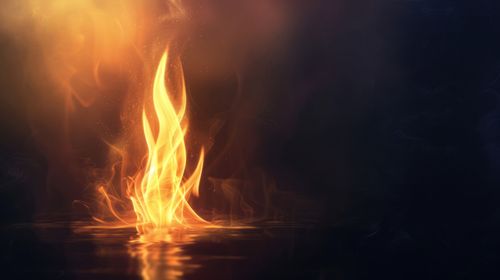Context is important. When taking up the history of any great move of God, it is important to know the climate and circumstances that supported or hindered the work. While this is true when considering any topic of Christian history, it is perhaps more critical when studying the history of the church of God Reformation, led by D.S. Warner.
Apostles A. Everett and S. Hargrave developed the following phrase to help us understand that “prophecy is history foretold and history is prophecy fulfilled.” One of Bro. D.S. Warner’s (the founder of the Gospel Trumpet) most notable gifts was his understanding of prophecy. His gift was so powerful and his understanding and application so accurate that there is not a church of God group in the world who has not built upon the prophetic understanding he spread through his preaching, prose, and publications. This includes many of the Pentecostal groups who trace their history back to the Azusa Street revivals of the early 20th century and William Seymour 1, who at one time stood with the saints in light.
During Warner’s lifetime (1842-1895), there were many major events in the U.S. and beyond that should be taken into consideration when recounting the impact of his work on the world. For example, he was alive during the American Civil War (as an enlisted serviceman), the Emancipation Proclamation, the assassination of President Abraham Lincoln, Reconstruction, and the rise of the Ku Klux Klan.
The Ku Klux Klan, or KKK, was an American terrorist group that epitomized the doctrine of white supremacy. According to most historical accounts, it began after the end of the American Civil War in response to the newly freed African American citizens and what they perceived to be a loss of their own ideological influence on American society, and their economic power.
The KKK is an unfortunate but very real part of understanding the formation of the U.S. as a world power. More importantly, they played a significant part in religion in America, and specifically the Church of God. The KKK is generally believed to have had three major periods in which they operated with success (if that’s what you call terrorism), divided as follows: First Klan: 1865–1872; Second Klan: 1915–1944; Third Klan: 1946/1950–present 2.
The first period of known clan activity for white supremacy was not new, but the formation of and codified version of white supremacy espoused by the KKK coincides with the period from the Emancipation Proclamation to the time shortly before the Compromise of 1877. This was a very tumultuous time period when seeking to understand the life and labors of D.S. Warner, yet is often omitted. This was the time of the 14th Amendment which granted full citizenship to the newly emancipated slaves and the 15th Amendment (the right to vote).
During this time period, white supremacist groups advocated for Black Codes, codified the Vagrancy Act of 1866, inculcated a deepened sense of segregation, lynching, and other horrible systems designed to continue America’s peculiar institution, only under a new name. Take the 13th Amendment for example. At first glance, the 13th appears to end American slavery.
However, the language clearly outlines exactly how to continue slavery. Section 1: “Neither slavery nor involuntary servitude, except as a punishment for crime whereof the party shall have been duly convicted, shall exist within the United States, or any place subject to their jurisdiction.”
According to Professor Emeritus James Madison of Indiana University, the KKK was a very active organization with membership records and dues. Referring to the Second Klan (1915–1944), the KKK in Indiana alone had somewhere between 300,000 to 400,000 members 3. These were dues-paying, recorded members at a time when the state population was approximately 3 million people (1920 census) 4. That is 10 – 13% of the state’s population. Taking a little liberty to extrapolate, the effect of the KKK must have been much higher in the state.
Professor Madison goes on to say that there were three things that characterized the KKK–members were “white,” native-born Americans, and Protestants.
The student of the life and labors of D.S. Warner knows well that the main target of his preaching and writing was sectism. Six months after he received the instantaneous experience of sanctification, he penned in his journal:
“On the 31st of last January the Lord showed me that holiness could never prosper upon sectarian soil encumbered by human creeds and party names, and gave me a new commission to join holiness and all truth together and build up the apostolic church of the living God. Praise His name! I will obey Him.” 5
His message of unity was to all men regardless of culture. And his message of holiness was the answer to every form of religious creed, dogma, and doctrine that prevented God’s children from coming into one body as Christ prayed (John 17:21).
To the newly freed African Americans, this message was like water in a dry land, and the membership of the church of God swelled because of Bro. Warner’s clear preaching and writing in this very periodical you are now reading. His message was a great threat to sectism or Protestantism. Keep in mind, the KKK supported and upheld the system of Protestantism. We do not intend to trigger the reader at this point. I do not believe that everyone trapped in a Protestant sect was a member of the KKK. However, we have to be honest and ask how does history define the religion of the KKK? It promoted the idea of division, white superiority, evolutionary races, and other anti-Christian ideas. These ideas are antithetical to Christ, and the target of Bro. Warner’s divine vials of wrath (Revelation 15 and 16).
During the time period immediately following Bro. Warner’s death, it is estimated that African American’s represented one third of the total church of God membership 3. By 1917, the African American saints started their own camp meeting separate from the annual Anderson, Indiana camp meeting, where they had once enjoyed sweet fellowship.
The white, so-called, ministers told the “colored brethren,” “There are too many of your people coming here. You’ll hinder whites from coming and being saved. Why don’t you get a place of your own?” 6 With the church home offices in Anderson, there must have been pressure from white supremacists behind this request.
We do not have any record that anyone from the KKK infiltrated the church, nor do we know of any direct threats against the church for having a visible unified body of believers, made of all ethnicities, but neither can we say it did not happen, and, using our sanctified minds to conclude, by the power of the gift of prophecy, that a white supremacist power of the devil, through the KKK, had a much greater effect on the church than is comfortable to admit.
The KKK is one of many dark stains in the fabric of America. We are naïve to assume that such a well-organized, economically powerful, and politically active group did not have influence on the Reformation. We simply need to point back to the Civil Rights era to see exactly how religious and influential the KKK was then, to have a sense of how that same spirit worked among some of the pioneers of the Church of God Reformation, and how those same powers work today.
The message of the church today is the same as it was when Bro. Warner started this work–anti-sectarian and anti-denominational, with the “Come out” message to all nations into the one, visible, united, and diverse body of believers.
This is not a call limited to calling out souls from religious Babel. At this time of the 7th Trumpet, the consummate message and zenith of the gospel, is a call to come out of all forms of oppression, division and confusion, uniting into the one family of God, regardless of people, tongue, kindred, or nation.



